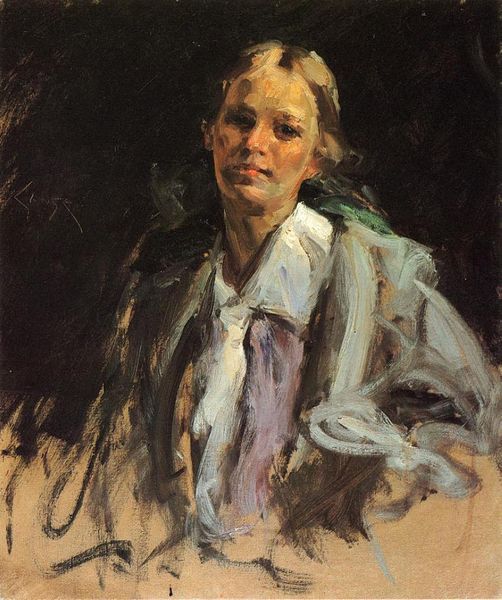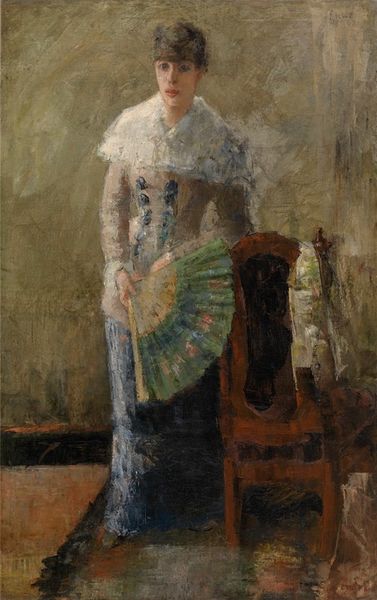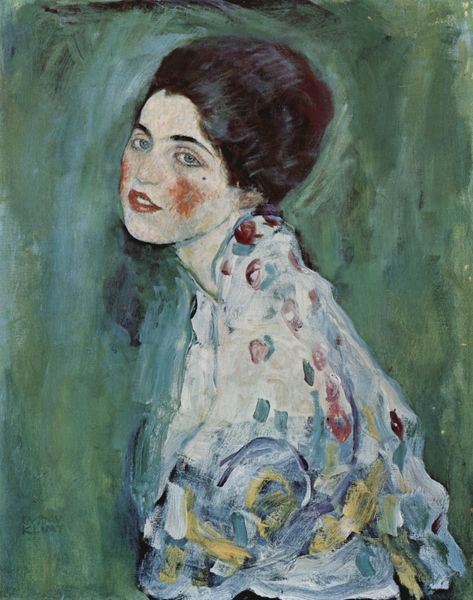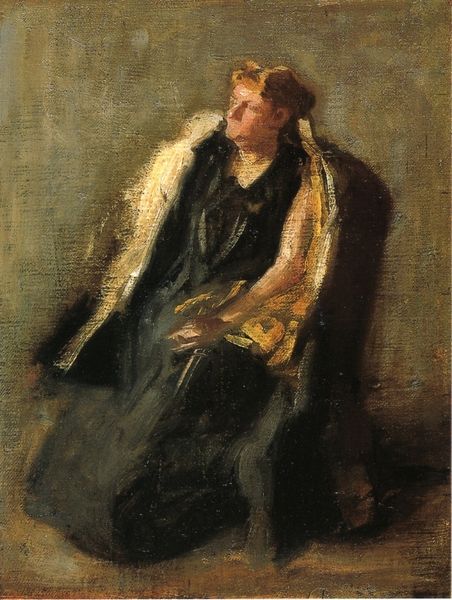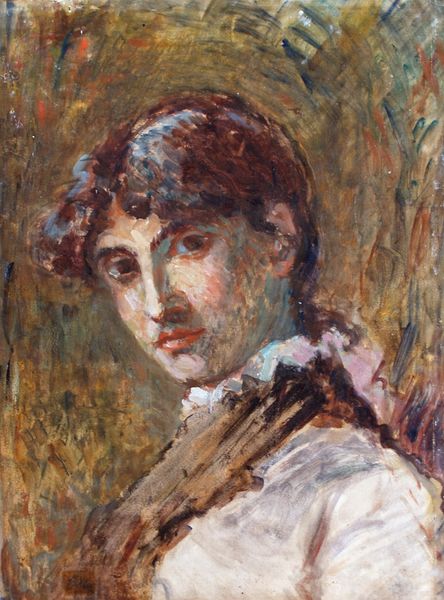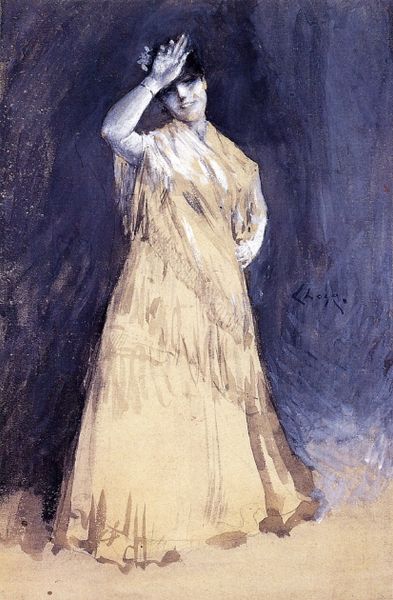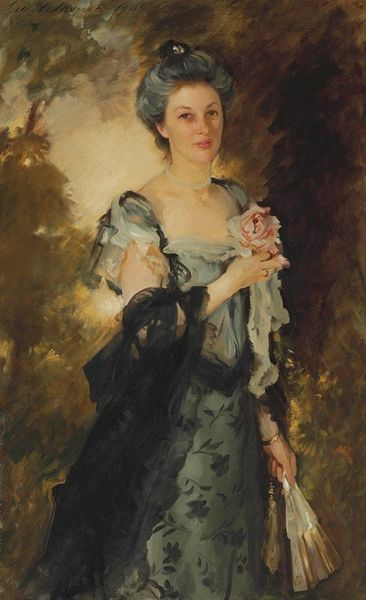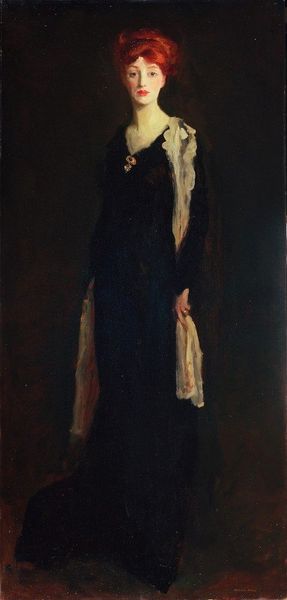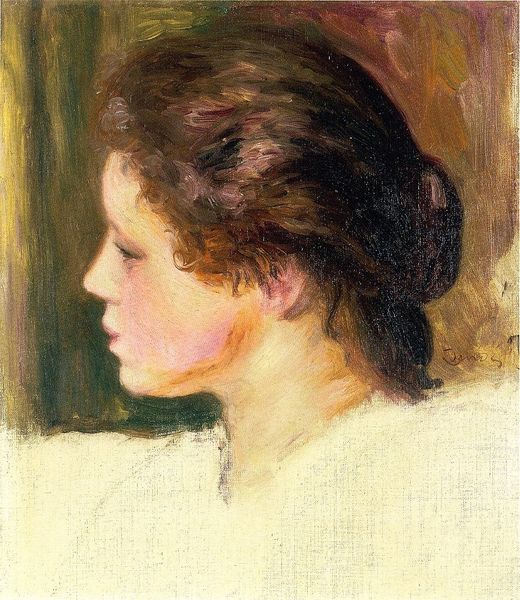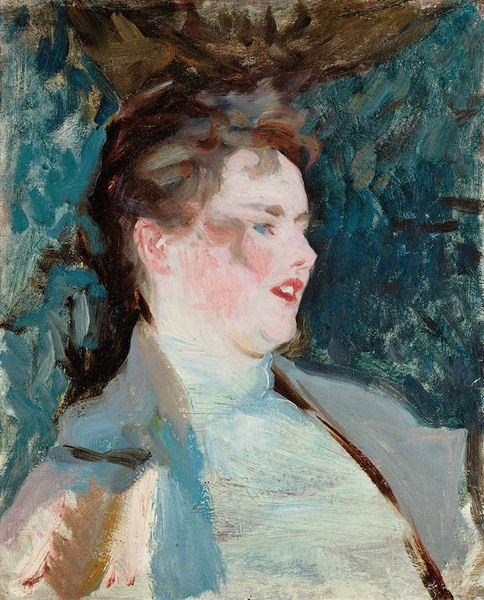
Copyright: Public domain
Editor: Here we have Konstantin Korovin's "Portrait of Z. Pertseva," painted in 1921. It’s an oil painting, and I'm struck by how the loose brushstrokes give it this sense of immediacy. What story does this portrait tell, particularly considering the period it was made in? Curator: It tells a story of material constraints and artistic innovation. Think about Russia in 1921: the revolution had just ended, resources were scarce. Look closely at the brushwork—it's rapid, almost frantic, driven by the necessity to conserve paint and canvas, maybe even influenced by the industrial energy around them.. This isn't the smooth, idealized portraiture of the Tsarist era. This roughness is evidence of how artists adapted under these material pressures, blurring the lines between fine art and the rapid pace of industrial production. Editor: So the materiality, even the sparseness, is key to understanding it? Curator: Absolutely. Consider the subject's clothing. Is it lavish? No. But there's an evident interest in capturing the texture of the fabrics with broad strokes. Even the jewelry—one single, yet detailed, ring—hints at lingering class markers being reimagined in the face of an egalitarian ideal. How might access to materials have dictated the kind of image Korovin created? Editor: That's a great point. Thinking about access and scarcity really changes how I see it. I was focusing on the face and thinking about her personality, but I now realize I was not examining how social upheaval dictated the materials. Curator: Exactly. Now you can start questioning who has access to art production and under what circumstances. Always look to the process; it's just as important as the finished piece! Editor: That's a really helpful framework to think about art. Thanks!
Comments
No comments
Be the first to comment and join the conversation on the ultimate creative platform.
